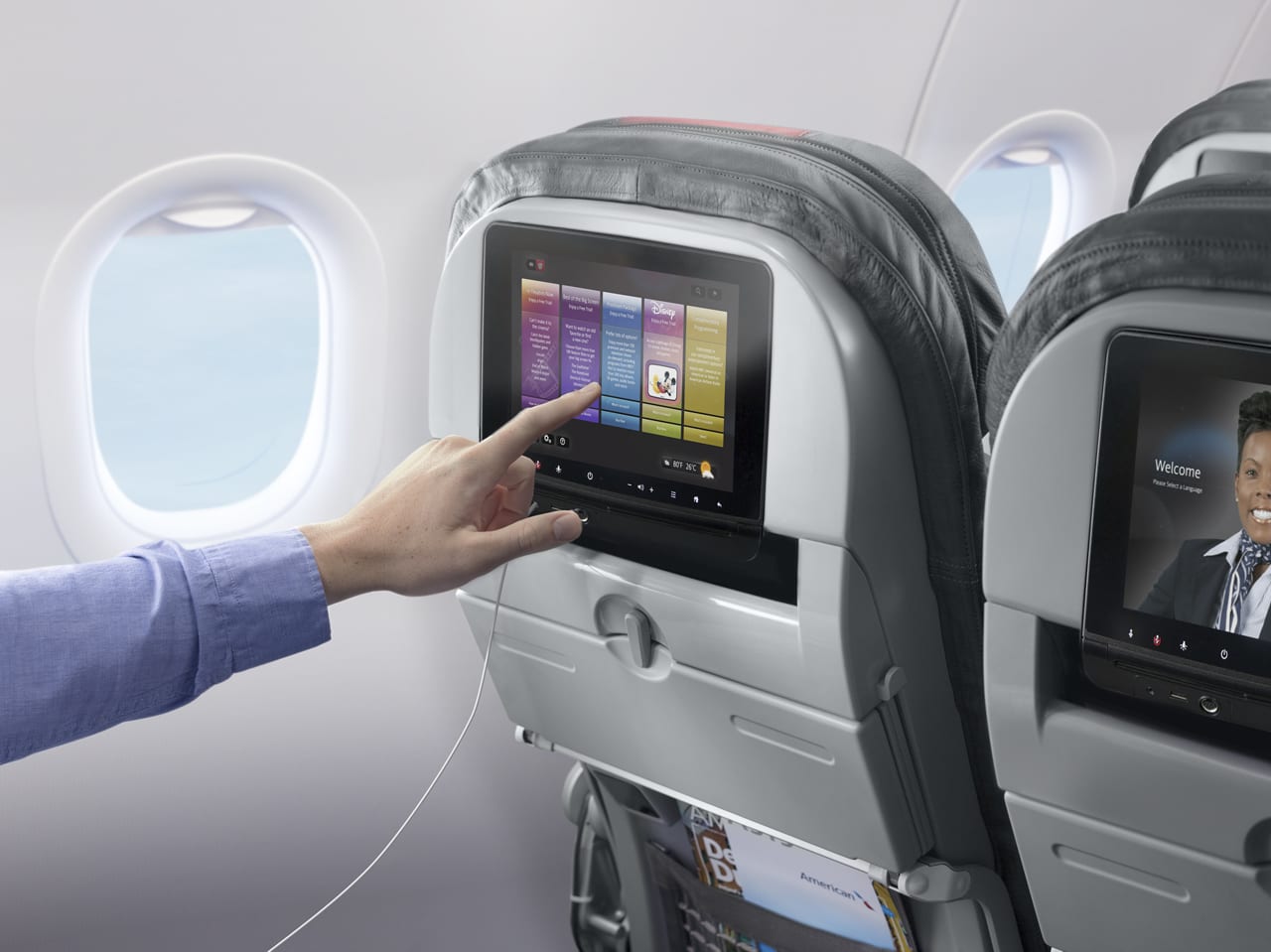
Executives from Airbus and Boeing explained how they’re trying to help airlines educate passengers about cabin air recirculation and health concerns amid the COVID-19 coronavirus pandemic. (American Airlines)
Does the average commercial airline passenger have a good enough understanding of how airplane cabin air recirculation systems work to fly without concerns of catching COVID-19 from touching a surface or contact with passenger or crew member?
“I’ve had people tell me that the airplane is a closed tube, and the fact is that it is not,” Jeff Knittel, chairman and CEO of Airbus Americas said during the Thursday Aug. 27 U.S. Chamber of Commerce’s Path Forward: COVID-19 and the Future of Travel webcast.
Airlines need as many new and recurring customers as possible back in their cabins as they try to rebound from the historic revenue and passenger losses that occurred between April and June. One of the actions many carriers are taking toward that goal include introducing new cleaning methods, such as the use of UV lighting and chemicals to disinfect cabin interiors between flights and aircraft that featured a traveler with a positive COVID-19 case for contact tracing.
Lufthansa Group even filmed a brief educational video showing how each mechanical and electrical system within the aircraft helps recirculate a mix of clean and recirculated air throughout the cabin.
However, in discussions with airlines and average everyday passengers, Knittel said that he still sees a lot of concern about the possibility of catching COVID-19 within an aircraft cabin. In recent months, across several different virtual event webinars and through educational material published on their websites, airlines and industry OEMs have most commonly referred to the High-Efficiency-Particulate Arrestors (HEPA) filters used on modern aircraft.
HEPA filters are designed to eliminate up to 99.7 of hazardous particles in the air, down to the size of microscopic bacteria and virus clusters. When an aircraft is in-flight, passengers are breathing air that is about 60 percent fresh air externally pumped in versus 40 percent that is recirculated through the HEPA system, according to Airbus.
While they continue to compete for new airline orders, one thing Airbus and Boeing have agreed on is a need to educate more passengers on why cabin air is clean enough to eliminate their concerns about catching the coronavirus in-flight.
“Fresh air is flowing into the airplane 20-30 times per hour, it’s filtered and comes through in hospital grade filters and it’s flowing down. And part of what we have to do is educate the public as to why flying is safe, and that’s a major reason why we’re working together,” Knittel said, referring to the collaborative approach to understanding how to make cabins as germ-free as possible.
In May, Boeing named Mike Delaney – now in his 30th year with the company – to lead its new “Confident Travel Initiative.” In partnership with the International Air Transport Association (IATA), Airlines 4 Europe (A4E) and several other organizations the industry coalition provides education and resources about airline travel. HEPA filters and air recirculation systems are explained, along with links to new COVID-19 tracing tools and apps that airlines are using.
There is even an option for travelers to directly ask questions about specific touchpoints within an aircraft and have them answered by an expert.

Boeing is using its new “Travel Confident” website to educate passengers on how complex aircraft systems such as HEPA filters and air recirculation works. (Boeing)
Delaney said the videos airlines have been publishing about the use of UV lighting and new chemicals to sanitize cabins are beyond hype. Both Airbus and Boeing have separately tested how those methods reduce the possibility of transmitting the virus in-flight.
“We and Airbus have done some research with a university where we put a human safe virus onto a mockup of an airplane and used the cleaning methods that are being implemented by the airlines,” Delaney said. “We’re seeing 99.9 percent effectiveness at eliminating the virus with simple cleaning methods like wiping with isopropyl alcohol or using some of the cleaners the airlines are using, so we’re very confident with the test data we have that the airplanes being presented to the crews and passengers are extremely clean.”
Beyond the disinfecting methods, both executives also answered questions from viewers about health concerns regarding other passengers that could be traveling while COVID-19 positive and not know it until after their journey is complete. Delaney said that by using a multi-layered approach, airlines can implement four to five layers of protection that help prevent transmission between passengers.
“Airlines can hand out an isopropyl alcohol wipe or passengers bring on their own wipes. If you just wipe your tray table or seat belt and stow bin area it is amazing how quickly just a simple wipe kills the surrogate virus we’re using, which is actually much more difficult to kill than the COVID-19 virus,” Delaney said.
Other layers of protection advised include the continued use of new cleaning methods airlines have adopted as well as passengers wearing masks throughout their flight. Airlines and airports are also trying to use new contactless digital technologies such as new public kiosks and updates to their mobile smartphone applications to reduce physical contact needed between flight crew members, passengers and surfaces inside cabins and terminals.
“The strategy is really about multiple simple layers so that even if you have that rude passenger, the other systems will make up for it,” Delaney said.